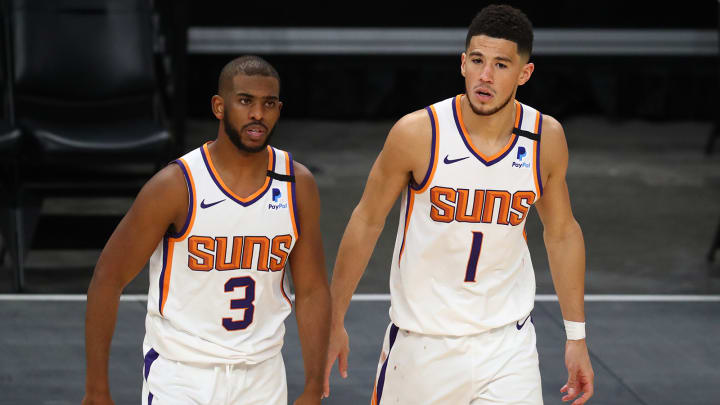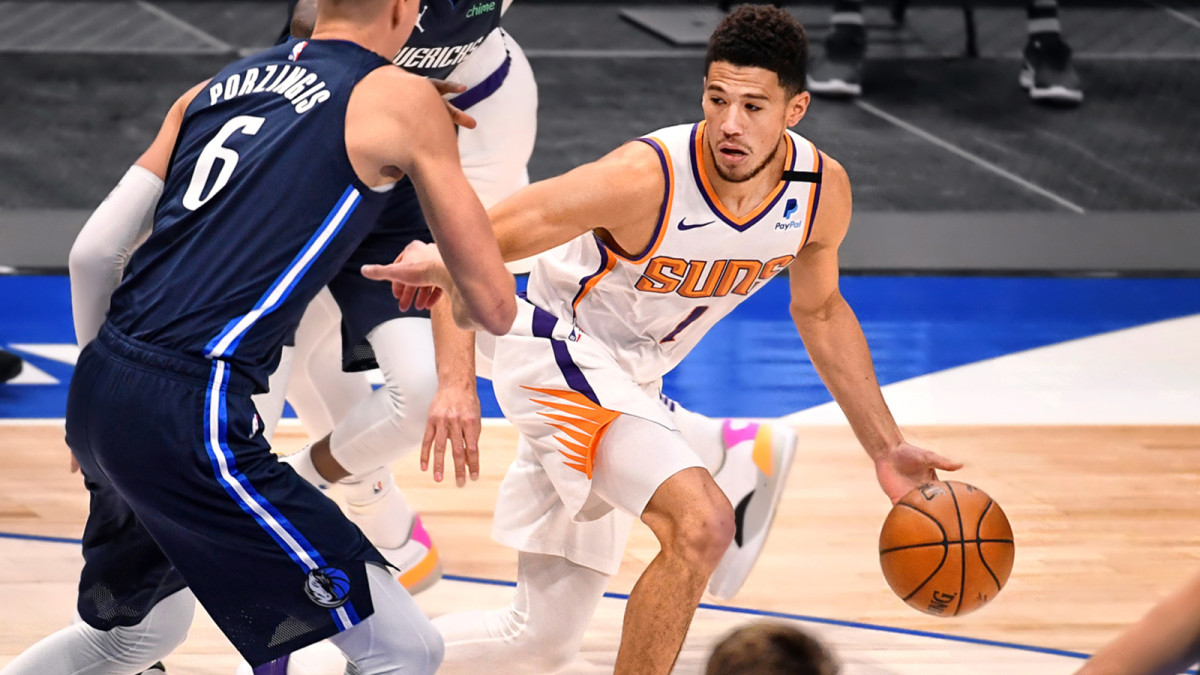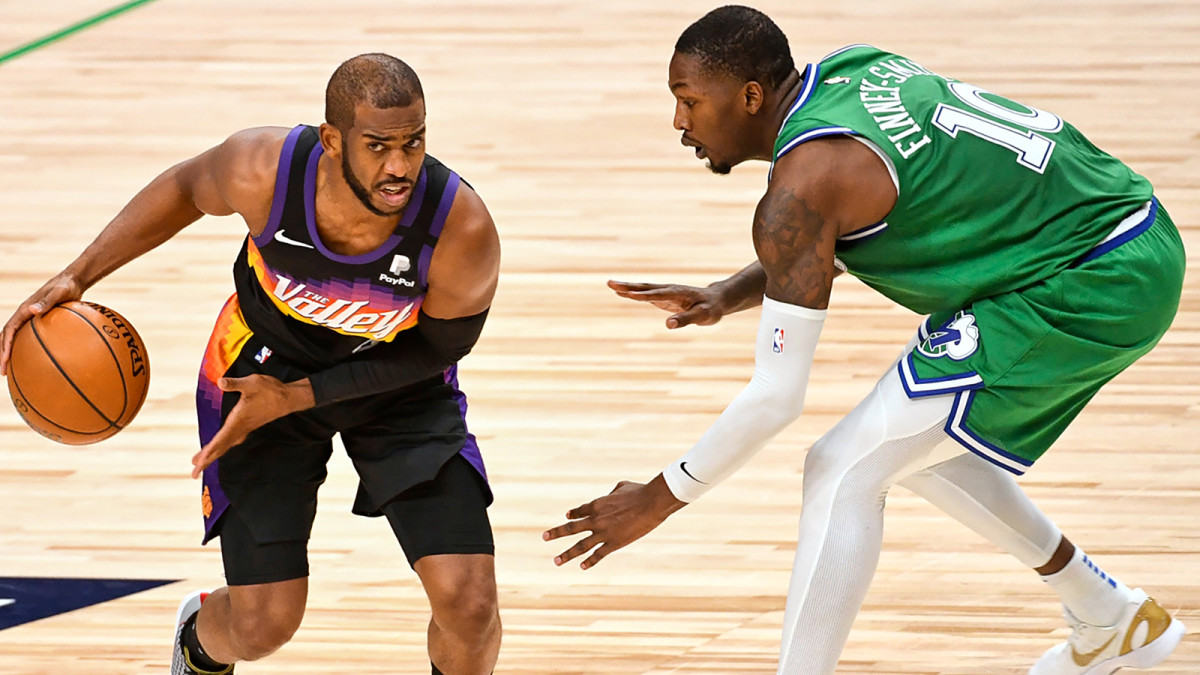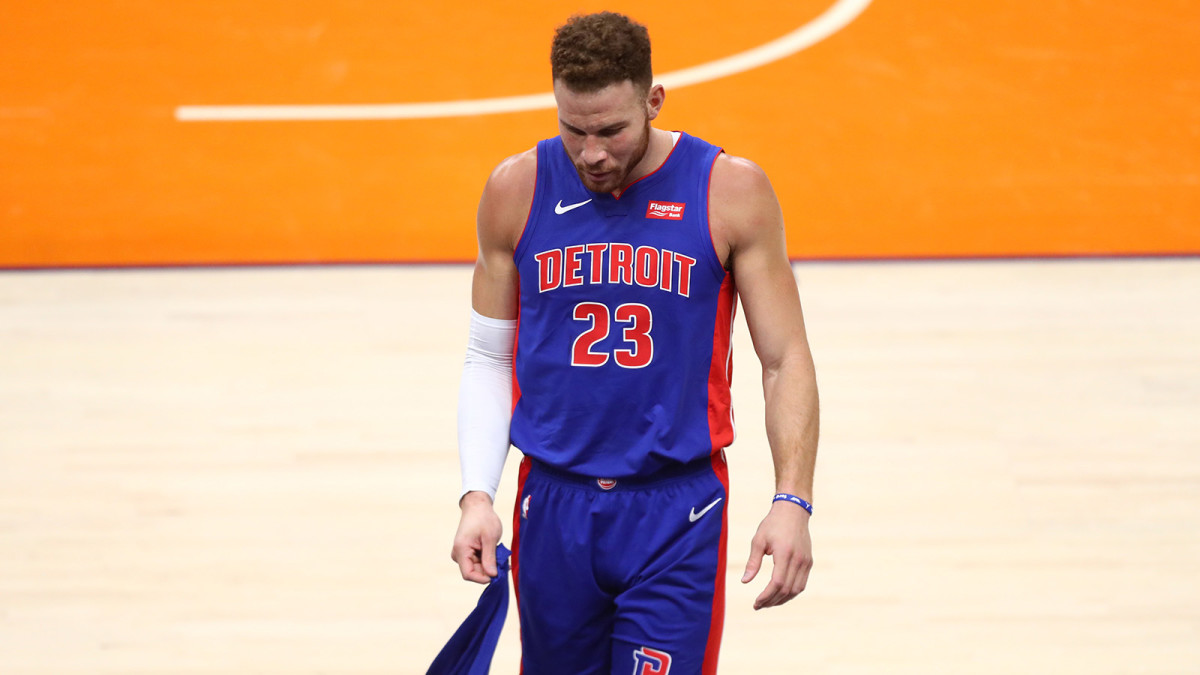Analyzing the Dynamic Between Devin Booker and Chris Paul

Welcome to the Morning Shootaround, where every weekday you’ll get a fresh, topical column from one of SI.com’s NBA writers: Howard Beck on Mondays, Chris Mannix on Tuesdays, Michael Pina on Wednesdays, Chris Herring on Thursdays and Rohan Nadkarni on Fridays.
If we were to categorize all 30 teams based on their odds to win this year’s championship, the Suns would enter the second half of the 2021 NBA season either at the bottom of Level 1 or the top of Level 2. The Suns are 24–11 with the NBA’s third-best defense and third-highest net rating. They rank fourth in assist rate with a top-10 offense, and since a 22-point loss against the Pelicans on Feb. 3, they’re 13–2 with a league-leading 13.3 net rating. They entered the break with fewer losses than every team except the Jazz.
Phoenix boasts the NBA’s top healthy (Devin Booker’s knee sprain notwithstanding) backcourt outside of Brooklyn, a hulking former first pick at center, one of the more malleable wings in basketball, a dominant bench mob, sensible veterans, smart coaches and the collective will to make it all work.
But as is the case with any blooming newcomer, questions nibble at the periphery of every debate that posits them as an elite team. Booker, the 24-year-old franchise player, has never competed in the playoffs. Same with Deandre Ayton, a ceiling raiser who’s rockily progressing toward his limitless potential.
How will the entire team respond when down in a seven-game series? The answer won’t come until we get there; when that time arrives, there's a very good chance it’ll be tied to Phoenix’s most pressing preseason curiosity: How will Booker and Chris Paul coexist, as two self-sufficient primary ballhandlers at very different stages in their respective careers?
The biggest concerns have been alleviated, for the most part. The Suns score 120.8 points per 100 possessions when they share the court in the fourth quarter (a figure bested only by the Nets) and average 101.2 points per 100 half-court plays, which is sixth-best in the league. But the weight of their partnership, and how it continues to evolve underneath escalating expectations, is a gripping plotline in a season filled with uncertainty. At the end of the day it’s their dynamic that will ultimately decide whether the Suns are a true contender or something less threatening.

For the entire season Paul and Booker are both more effective when commandeering their own units. Phoenix’s net rating is a decent 4.1 when they share the court, then spikes into double digits when only one of them is playing. Both are more efficient with higher usage rates when alone; Booker’s assist rate nearly doubles.
Even though February saw their net rating climb to 12.9 when together, in the playoffs they will, in all likelihood, spend fewer minutes on their own, which makes how they interact now so important.
“Month by month you can see they’ve progressed in a good way. They’ve trended in a way that’s successful for us. But we also feel like we can be better.” Suns head coach Monty Williams recently said. “It’s going to take a lot of work, a lot of diligence and sacrifice to make it work for the big situations that we want to be in.”
Historically there aren’t many teams that have won it all being led by a backcourt. The 1979 Supersonics, 1989 and 1990 Pistons, and 2015 Warriors are pretty much it, though even the internal pecking order within those teams is up for debate. And Phoenix’s closest blueprint for success—less in style than makeup—is the 2018 Rockets, where Paul and James Harden won 65 games and posted a dominant 13.1 net rating when together. They were an immediate sensation, isolating a ton and leveraging each other’s gravity with some of the most effective one-on-one basketball we’ve ever seen.
But a significant difference between the two duos is how they directly communicate on the floor. In 2018 only 11.7% of the passes Harden caught were from Paul. The next year that number went up 1%. Meanwhile 33.2% of all the passes Booker catches come from Paul. To take this one step further, Paul assisted 68 of Harden’s *1,494* baskets during their two seasons as teammates. Already this season through 30 games, Paul has assisted 50 of Booker’s baskets.
Unlike his role in Houston, Paul is the fulcrum on this team, powerful enough to wrap an entire roster’s identity around his strengths and limitations. The Suns rank 29th in pace, tapping the brakes more than they used to. Possessions are deliberate. Half-court execution is sustenance, a strategic outlook that defies the freer, more haphazard aesthetics adopted by well over half the league. It’s also where Booker, who’s never functioned in such a plodding tempo, has had to make his largest adjustment. The Suns don’t run nearly as much (especially off defensive rebounds) as they used to. One result: Last season 40.1% of Booker’s points came from free throws and fastbreaks. He’s slid down to 28.5% this year, cutting some of the sport’s easier opportunities out of his diet. His free-throw rate is at a career-low mark, relevant to a team that was fifth in free-throw rate last year but ranks 26th right now.

For Paul there have been fewer adaptations. Compared to 2018 the Hall of Famer is isolating half as often as he once did—but still effective when he does (something we could see more of in the playoffs)—and is closer to who he’s been in every other season of his career: running high pick-and-rolls with an athletic dive man. Somehow, as a scorer, he still contains fewer stipulations than any six-foot, 16-year-veteran should; though the iso-fadeaway that’ll put his kids' kids' kids through college has nearly vanished, Paul still feasts on his patented right elbow pullup (he’s shooting 60.5% from that zone) and has a higher midrange frequency than every other player.
For the Suns to get where they want to go, though, Paul has to prop up a prodigious offensive weapon higher than where he already is. Looking at the numbers, that hasn’t necessarily happened yet. Booker, who possesses the ninth-highest usage rate in the league, generated excellent individual offense before Paul showed up, and this season most of his metrics have barely budged from last—be it the percentage of his shots that are unassisted, his effective field goal percentage or the average seconds/dribbles made per touch.
That doesn’t mean Paul isn’t helping. His dead-eye spot-up shot spaces the floor better than any point guard Book has ever played with, and the Suns have found plenty of ways to involve both All-Stars in the same action, one crunchtime favorite being a stack pick-and-roll with Ayton that has several permutations. Here’s one against the Bulls that comes after a purposeful flurry of ball and man movement intended to disguise what they actually want to do.
And then here’s Booker pretending to set a screen on Jarred Vanderbilt before he fades to the opposite elbow for a wide-open jumper.
Booker is lethal off pin-downs and the angles he uses to catch Paul’s passes are impossible to stop, and the two are starting to improvise off those sequences, leveraging the different ways Phoenix’s leading scorer can get a bucket. Here, instead of using Ayton’s screen, Paul waits for the big to clear the paint and then hits Booker—who does a great job sealing Anthony Edwards—on the duck in.
The Suns are loaded with spacers (Mikal Bridges, Cam Johnson, Jae Crowder, etc.) who either get off the ball when a shot isn’t available or take advantage of the split-second, half-inch advantage Paul and Booker afford them by drawing help. Those pieces trust their two best players to finish possessions with an efficient shot. But Paul and Booker can’t maximize their connection if that same faith doesn’t bleed into their own dialogue.
Take this play against the Bucks as an example. It’s well defended until the very end, but with about six seconds on the shot clock Paul flips the ball out to Booker after he picks up his dribble. Instead of taking a tough shot or even glancing at the rim, Booker tosses it right back to Paul, who has a mismatch against Brook Lopez.
This moment is a single grain of sand lying in the season’s beach. It’s subtle but symbolizes the selflessness and IQ both guards have when operating in tandem to take down a defense that’s dialed in.
The complexities of any on-court collaboration between two stars extend far beyond a few select possessions. It’s especially difficult when the players in question have skill sets that tend to chafe when propped beside someone so similar. Paul and Booker don’t screen for each other like LeBron James and Anthony Davis. They can’t cover for each other’s defensive deficiencies like Klay Thompson or Draymond Green used to for Steph Curry. They aren’t a fungible wing duo like Jayson Tatum and Jaylen Brown or Paul George and Kawhi Leonard.
The plays seen above don’t dive too deep into how different lineup configurations are able to stifle/empower Booker and Paul, either. But in their roles as Phoenix’s two most important players, what’s clear is this team will only go so far as they can take them. The more the Suns win, the more relevant their partnership will be. And in a year that’s begging a plucky upstart to make a deeper run than almost all preseason expectations called for, Paul and Booker have a chance to do something special in their first run as teammates.
Why I believe in Blake Griffin

Blake Griffin’s season has been a graceless disaster. In Detroit, as one of the NBA’s most confusing, askew rebuilds, he made no sense. But I’m a big believer in situational context, roles, fit and how teammates influence one another, which is why I feel pretty confident in saying that the Griffin we see in a Nets jersey will not be the same player who shot 28.1% from deep over the past two seasons.
This doesn’t mean he’ll look like the five-time All-NBA bruiser he once was, or ever score more than 25 points in any one game. But he’s also only 31 years old. Picture him as a rejuvenated big who can set a high screen for Harden (or Kyrie Irving or Kevin Durant or Joe Harris) and then either carve up the defense out of a 4-on-3 (with an open prairie of space between him and rim) or even bulldoze a switch. The Nets may not need this type of player, but they also don’t currently have one.
Now, they can play Irving, Harden, Durant, Griffin and DeAndre Jordan at the same time, then have the latter two crash the offensive glass whenever a shot goes up. Just thinking about the second-chance opportunities Brooklyn can get against defenses that just worked as hard as they physically could to get a stop ... it’s soul-crushing. And if Jeff Green or Bruce Brown or Jordan gets hurt in a playoff series, this theoretically new-is-old version of Griffin will be useful.
Of course there’s also a world where Griffin is truly washed, the Nets cut him and use that roster spot to upgrade their defense. It’s a possibility, albeit one that runs in contrast to everything we know about players who appear done, only to soar in brand new, pressure-free environments, with expectations that couldn’t be any lower than they already are. Griffin will justify this signing, one way or another.
